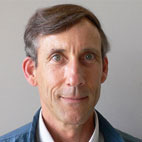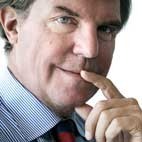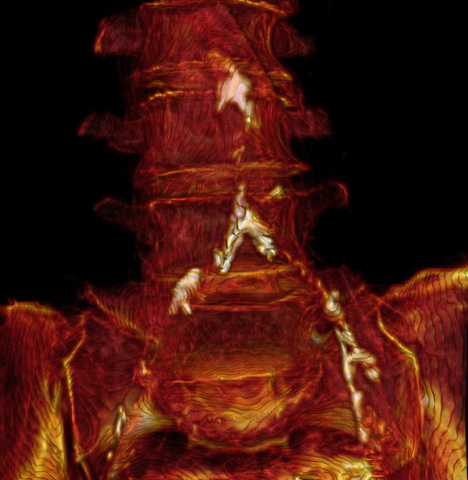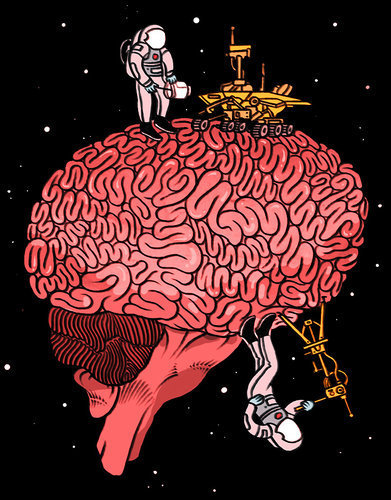Stewart Brand's Blog, page 74
April 3, 2013
Jeff Bezos Recovers Apollo 11′s F-1 Engines
Jeff Bezos, CEO of Amazon and supporter of the 10,000 Year Clock, is recovering and restoring a few pieces of scientific history.
After a three-week mission in the Atlantic Ocean, Bezos and his team of deep-sea divers have uncovered several of the F-1 engines that helped rocket Apollo 11 – and Neil Armstrong – to the moon, back in 01969. Bezos writes:
“We found so much. We’ve seen an underwater wonderland – an incredible sculpture garden of twisted F-1 engines that tells the story of a fiery and violent end, one that serves testament to the Apollo program. We photographed many beautiful objects in situ and have now recovered many prime pieces. Each piece we bring on deck conjures for me the thousands of engineers who worked together back then to do what for all time had been thought surely impossible.”
Bezos plans to restore the engines and display them to the public in hopes that they will serve as inspiration for new bold endeavors.
The LA Times reports that NASA lauds Bezos’ efforts as yet another step towards greater public access to space: “We look forward to the restoration of these engines by the Bezos team and applaud Jeff’s desire to make these historic artifacts available for public display,” NASA Administrator Charles Bolden has said.
You can see more photos and a video of Bezos’ findings on his blog, bezosexpeditions.

April 2, 2013
O’Reilly Talks about Digital Preservation
Former SALT speaker Tim O’Reilly recently shared the video of a talk he gave on digital preservation at the Library of Congress in 02011.
Discussing some of his own “personal failures” to archive O’Reilly Media’s early projects, O’Reilly here emphasizes the importance of preserving digital information and resources in a world where printed matter may eventually become obsolete. We risk slipping into a digital dark age if we continue to treat digital archiving as an “afterthought.” Citing the examples of Wikipedia and Github, O’Reilly therefore urges us to recognize the long-term relevance of what we create on the web. He suggests we change the way we engage with online systems, and build preservation into the very core of our online activity.

March 28, 2013
George Dyson Seminar Media
 This lecture was presented as part of The Long Now Foundation’s monthly Seminars About Long-term Thinking.
This lecture was presented as part of The Long Now Foundation’s monthly Seminars About Long-term Thinking.
“No Time Is There”— The Digital Universe and Why Things Appear To Be Speeding Up
Tuesday March 19, 02013 – San Francisco
Video is up on the Dyson Seminar page for Members.
*********************
Audio is up on the Dyson Seminar page, or you can subscribe to our podcast.
*********************
The digital big bang – a summary by Stewart Brand
When the digital universe began, in 1951 in New Jersey, it was just 5 kilobytes in size. “That’s just half a second of MP3 audio now,” said Dyson. The place was the Institute for Advanced Study, Princeton. The builder was engineer Julian Bigelow. The instigator was mathematician John von Neumann. The purpose was to design hydrogen bombs.
Bigelow had helped develop signal processing and feedback (cybernetics) with Norbert Wiener. Von Neumann was applying ideas from Alan Turing and Kurt Gödel, along with his own. They were inventing and/or gates, addresses, shift registers, rapid-access memory, stored programs, a serial architecture—all the basics of the modern computer world, all without thought of patents. While recuperating from brain surgery, Stanislaw Ulam invented the Monte Carlo method of analysis as a shortcut to understanding solitaire. Shortly Von Neumann’s wife Klári was employing it to model the behavior of neutrons in a fission explosion. By 1953, Nils Barricelli was modeling life itself in the machine—virtual digital beings competed and evolved freely in their 5-kilobyte world.
“In the few years they ran that machine, from 1951 to 1957, they worked on the most difficult problems of their time, five main problems that are on very different time scales—26 orders of magnitude in time—from the lifetime of a neutron in a bomb’s chain reaction measured in billionths of a second, to the behavior of shock waves on the scale of seconds, to weather prediction on a scale of days, to biological evolution on the scale of centuries, to the evolution of stars and galaxies over billions of years. And our lives, measured in days and years, is right in the middle of the scale of time. I still haven’t figured that out.”
Julian Bigelow was frustrated that the serial, address-constrained, clock-driven architecture of computers became standard because it is so inefficient. He thought that templates (recognition devices) would work better than addresses. The machine he had built for von Neumann ran on sequences rather than a clock. In 1999 Bigelow told George Dyson, “Sequence is different from time. No time is there.” That’s why the digital world keeps accelerating in relation to our analog world, which is based on time, and why from the perspective of the computational world, our world keeps slowing down.
The acceleration is reflected in the self-replication of computers, Dyson noted: “By now five or six trillion transistors per second are being added to the digital universe, and they’re all connected.” Dyson is a kayak builder, emulating the wood-scarce Arctic natives to work with minimum frame inside a skin craft. But in the tropics, where there is a surplus of wood, natives make dugout canoes, formed by removing wood. “We’re now surrounded by so much information,” Dyson concluded, “we have to become dugout canoe builders. The buzzword of last year was ‘big data.’ Here’s my definition of the situation: Big data is what happened when the cost of storing information became less than the cost of throwing it away.”
Subscribe to our Seminar email list for updates and summaries.

March 26, 2013
Neal Stephenson’s Hieroglyph Project Launches
Towers that reach 15 kilometers into the sky and autonomous 3D-printing robots on the Moon aren’t just great fodder for sci-fi; they’re also plausible enough to be considered as audacious, but realistic engineering goals. That sweet spot is exactly what the Hieroglyph project is aiming for. A collaboration between Arizona State University’s Center for Science and the Imagination and sci-fi author Neal Stephenson, Hieroglyph seeks to bring engineers and authors of science fiction together to develop and illustrate scenarios in which “Big Stuff Got Done.”
Neal Stephenson explains that Hieroglyph is working to put together a collection of sci-fi that avoids dystopian tropes and instead focuses on positive, inspiring possibilities:
The idea is to get SF writers to contribute pieces to an anthology. These pieces would all be throwbacks, in a manner of speaking, to 1950′s-style SF, in that they would depict futures in which Big Stuff Got Done. We would avoid hackers, hyperspace, and holocausts. The ideal subject matter would be an innovation that a young, modern-day engineer could make substantial progress on during his or her career.
A tower 15 kilometers in height is the scenario Stephenson is exploring, with help from structural engineer Keith Hjelmstad. The Hieroglyph website will serve as a hub and forum for sharing moonshot-style thinking like this; it’s already got Stephenson’s Tall Tower and the aforementioned Moon robots, a scenario being developed by Cory Doctorow.

March 25, 2013
George Dyson Seminar Media
 This lecture was presented as part of The Long Now Foundation’s monthly Seminars About Long-term Thinking.
This lecture was presented as part of The Long Now Foundation’s monthly Seminars About Long-term Thinking.
“No Time Is There”— The Digital Universe and Why Things Appear To Be Speeding Up
Tuesday March 19, 02013 – San Francisco
Audio is up on the Dyson Seminar page, or you can subscribe to our podcast.
*********************
The digital big bang – a summary by Stewart Brand
When the digital universe began, in 1951 in New Jersey, it was just 5 kilobytes in size. “That’s just half a second of MP3 audio now,” said Dyson. The place was the Institute for Advanced Study, Princeton. The builder was engineer Julian Bigelow. The instigator was mathematician John von Neumann. The purpose was to design hydrogen bombs.
Bigelow had helped develop signal processing and feedback (cybernetics) with Norbert Wiener. Von Neumann was applying ideas from Alan Turing and Kurt Gödel, along with his own. They were inventing and/or gates, addresses, shift registers, rapid-access memory, stored programs, a serial architecture—all the basics of the modern computer world, all without thought of patents. While recuperating from brain surgery, Stanislaw Ulam invented the Monte Carlo method of analysis as a shortcut to understanding solitaire. Shortly Von Neumann’s wife Klári was employing it to model the behavior of neutrons in a fission explosion. By 1953, Nils Barricelli was modeling life itself in the machine—virtual digital beings competed and evolved freely in their 5-kilobyte world.
“In the few years they ran that machine, from 1951 to 1957, they worked on the most difficult problems of their time, five main problems that are on very different time scales—26 orders of magnitude in time—from the lifetime of a neutron in a bomb’s chain reaction measured in billionths of a second, to the behavior of shock waves on the scale of seconds, to weather prediction on a scale of days, to biological evolution on the scale of centuries, to the evolution of stars and galaxies over billions of years. And our lives, measured in days and years, is right in the middle of the scale of time. I still haven’t figured that out.”
Julian Bigelow was frustrated that the serial, address-constrained, clock-driven architecture of computers became standard because it is so inefficient. He thought that templates (recognition devices) would work better than addresses. The machine he had built for von Neumann ran on sequences rather than a clock. In 1999 Bigelow told George Dyson, “Sequence is different from time. No time is there.” That’s why the digital world keeps accelerating in relation to our analog world, which is based on time, and why from the perspective of the computational world, our world keeps slowing down.
The acceleration is reflected in the self-replication of computers, Dyson noted: “By now five or six trillion transistors per second are being added to the digital universe, and they’re all connected.” Dyson is a kayak builder, emulating the wood-scarce Arctic natives to work with minimum frame inside a skin craft. But in the tropics, where there is a surplus of wood, natives make dugout canoes, formed by removing wood. “We’re now surrounded by so much information,” Dyson concluded, “we have to become dugout canoe builders. The buzzword of last year was ‘big data.’ Here’s my definition of the situation: Big data is what happened when the cost of storing information became less than the cost of throwing it away.”
Subscribe to our Seminar email list for updates and summaries.

March 22, 2013
The Ancient Roots of Heart Disease
We often think of heart disease as a by-product of modernity: for decades, the medical establishment has warned that too little exercise and too much fried food can clog our arteries and disrupt healthy circulation.
That’s still the case, but new research suggests that atherosclerosis might be older and more common that we thought. As NPR’s blog recently reported, our sedentary lifestyle of cars and hamburgers might not necessarily be entirely to blame.
Several years ago, a group of researchers found evidence of hardened arteries in a group of ancient Egyptian mummies. Intrigued, they recently looked at mummies from other civilizations as well – and found calcified arteries among more than a third of their sample. NPR quotes Randall Thompson, one of the study’s co-authors:
“It’s amazing that you can see this disease in all these different populations across 4,000 years of history, across three continents – such a wide span across the globe and all sorts of different diets and lifestyles and climates,” Thompson says. “Our conclusion is that, in large part, heart disease is part of human ageing and that we have risk factors that we don’t understand yet.”
These findings confront medical science with a whole new conundrum: if modernity doesn’t cause heart disease, what does? Thompson’s team has taken this as their cue for more historical research. We know some of the common contemporary risk factors, but a broader understanding of heart disease may lie in a deep look at the health of our ancestors.

March 21, 2013
Nicholas Negroponte Seminar Tickets
Seminars About Long-term Thinking

Nicholas Negroponte presents “Beyond Digital”
TICKETS
Wednesday, April 17 02013 at 7:30pm Marine’s Memorial Theater
Long Now Members can reserve 2 seats, join today! General Tickets $15
About this Seminar:
It’s far easier to predict the future when you are helping make and distribute it. Nicholas Negroponte exemplifies this with his notable accomplishments, including founding the MIT Media Lab, being the first investor in WIRED magazine, and founding the One Laptop Per Child program.
His 01995 book “Being Digital” gave a glimpse into the world we now occupy–complete with wireless, touch screens, ebooks and personalized news. In this talk, “Beyond Digital”, Negroponte will once again give us a glimpse of the possibilities that lie ahead.

March 20, 2013
David Eagleman on the value of brain science
The secret to a prosperous national future may be all in our heads. So says Long Now Board member David Eagleman in a recent op-ed contribution for the New York Times. In support of the President’s recent allocation of $3 billion to neuroscience research, Eagleman explains that the complicated riddle of our brain may hold the key to understanding just about anything.
Uncovering the mechanics of addiction, for example, will not just improve methods of treatment for substance abuse: by unlocking the possibility of developing preventive interventions, this knowledge could become a valuable strategy in the war on drugs. Similarly, greater knowledge of our neural networks may help to drive the development of more intelligent technology, and help build more adaptive machinery. In other words:
“Brain health, drug rehabilitation, computer intelligence, adaptive devices – these economic drivers would lavishly pay back any investment in brain research. So when a tax payer asks how to endow your country with a confident future, you can reply, the answer is right in back of your eyes.”

March 19, 2013
Danny Hillis: We need a backup internet
Speaking at TED earlier this year, Long Now co-founder Danny Hillis described the early days of networked computing – a time when one could register “think.com” on a whim and everyone with an email address or a domain could be listed in a single book.
He explained that the design of the Internet Protocol and the early community using it were infused with communistic values - ironic, he notes, as the tech grew out of Cold War militarism.
Since then, of course, the internet, its users and its uses have expanded far beyond the wildest dreams of its creators. In so doing, it has become an essential societal infrastructure – without having been designed as such. As another Long Now Board Member, David Eagleman, points out, the internet is not invulnerable. Emergency communications and other high-priority services must be possible without the internet, but increasingly depend on it.
Hillis says a separate backup internet would not be hard to build and would dramatically increase our resilience to disaster and malfeasance.

March 18, 2013
The Present
ThePresent from m ss ng p eces on Vimeo.
The Present is a clock with an annual dial that was funded originally through Kickstarter by design collective m ss ng p eces. The inspiration for this clock seems to come from a similar place as the Clock of the Long Now.
This was one of those early blockbuster Kickstarter projects that reached 4x its fund raising goal. After a couple years figuring out how to produce these as a product, it has finally shipped and we just received ours. It has excellent build quality from what I can tell and auto-magically sets itself as soon as you put batteries into it. Since we are only a few days away from the March Equinox ours moved directly to nearly the “3 o’clock” position in the middle of the green section (see pic below). As we approach summer the hand will move into yellow, then reds for autumn etc.
You can get your own at http://thepresent.is/

Stewart Brand's Blog
- Stewart Brand's profile
- 291 followers









